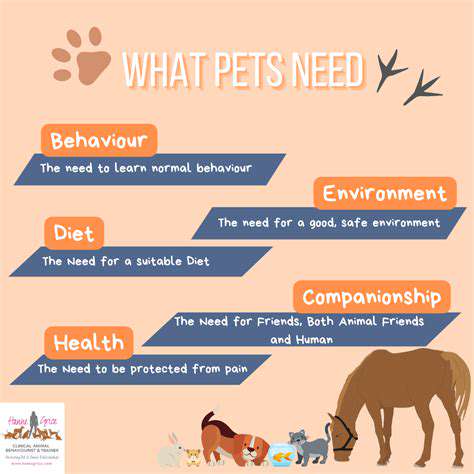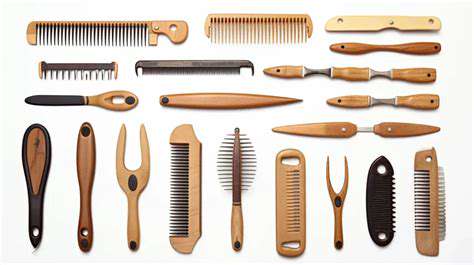Maintaining Pet Coat Health in Humid Climates
Addressing Humidity with Effective Solutions
After struggling with recurring issues, I invested in several solutions that made a world of difference. Placing moisture-wicking pads in their beds and using antifungal sprays during humid spells reduced skin problems dramatically. I also learned the importance of completely drying them after walks in damp weather - something I used to overlook.
Preventive Measures for Maintaining Optimal Humidity
Now I approach humidity control proactively rather than reactively. Keeping hygrometers in different rooms helps me monitor microclimates throughout our home. I adjust our dehumidifier settings seasonally and have learned which areas need extra attention. This preventive approach has saved us countless vet visits and kept my pets much more comfortable year-round.
Grooming Strategies for Humid Environments

Understanding the Impact of Humidity
Living through multiple humid summers taught me that standard grooming routines need adjustment. What works beautifully in dry weather becomes completely ineffective when the air turns thick with moisture. My poodle's perfectly styled cut would collapse into a frizzy mess within minutes outdoors, while my terrier's wire coat lost all its characteristic texture.
I've learned humidity affects different coat types in unique ways. Double-coated breeds suffer differently than single-coated ones, and curly coats react differently than straight ones. This understanding has helped me develop customized grooming approaches for each of my pets.
Choosing the Right Products
After wasting money on countless products that promised humidity resistance but failed, I've identified what actually works. Lightweight, water-based grooming sprays with natural astringents like witch hazel help control moisture without weighing down the coat. I avoid heavy oils and silicone-based products that trap humidity against the skin.
For shampoo, I look for formulas with tea tree oil or oatmeal for their antifungal properties - crucial in humid conditions. A light leave-in conditioner helps prevent static in drier periods while not contributing to moisture buildup when humidity rises.
Maintaining a Clean and Fresh Look
Humidity demands more frequent bathing, but over-washing can strip protective oils. I've found that a weekly rinse with just water, followed by a thorough drying, keeps my dogs fresh between actual baths. For paws, I use antiseptic wipes after every walk to prevent moisture-related infections between their toes.
Regular ear cleaning becomes even more critical in humid weather. I check and clean ears weekly with a vet-approved solution to prevent the yeast infections that flourish in moist ear canals.
Styling Strategies for Humidity
For my show dogs, humidity was the ultimate styling challenge. I learned that working in small sections and using minimal product yields better results than trying to fight the humidity head-on. Instead of fighting the curl that humidity creates in my poodle's coat, I now work with it, creating more natural styles that accommodate the moisture in the air.
Blow-drying technique matters immensely. I use a cooler setting and focus on thorough drying rather than styling when humidity is high, then do final touches just before showing.
Shaving Techniques for Humid Environments
While shaving might seem like a solution for humid weather, I learned this can actually cause more problems for some breeds. My double-coated dogs actually regulate temperature better with their full coat, as long as it's properly maintained. For them, regular brushing to remove dead undercoat is more effective than shaving.
Hair Care and Maintenance in Humid Climates
The single most valuable lesson I've learned is that prevention beats correction in humid climates. Establishing a consistent, humidity-adapted grooming routine keeps small problems from becoming big ones. Monthly professional grooming supplements my at-home care, with special attention to areas prone to moisture buildup.
I've also learned to adjust my expectations - in high humidity, perfection is unrealistic. Focus shifts from appearance to health and comfort, accepting that some days the weather will win the styling battle.











